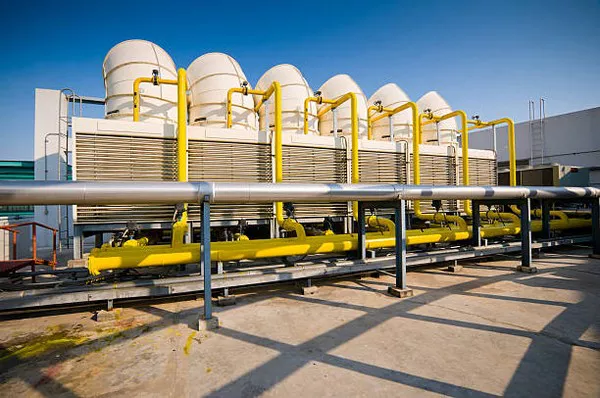Air compressors are indispensable tools for a variety of tasks, from inflating tires to powering pneumatic tools. DeWalt, a reputable brand in the world of power tools, offers a range of air compressors designed for both professional and home use. This guide will walk you through the essential steps of using a DeWalt air compressor, ensuring you maximize its efficiency and lifespan while maintaining safety standards.
Understanding Your DeWalt Air Compressor
Before diving into the operational steps, it’s important to familiarize yourself with the key components of your DeWalt air compressor:
- Motor and Pump: The motor powers the pump, which compresses the air.
- Air Tank: Stores the compressed air.
- Pressure Switch: Automatically shuts off the motor when the tank reaches a certain pressure.
- Regulator: Controls the pressure of the air going out of the tank.
- Pressure Gauges: Indicate the pressure inside the tank and the pressure being delivered to the tool.
- Drain Valve: Used to remove moisture from the tank.
- Safety Valve: Prevents the tank from over-pressurizing.
- Air Outlet: Where you connect your air hose.
Initial Setup
1. Unpacking and Inspection
Upon receiving your DeWalt air compressor, carefully unpack it and inspect all components. Ensure there are no damages from shipping and all parts are accounted for as per the user manual.
2. Choosing the Right Location
Place your air compressor in a clean, dry, and well-ventilated area. It should be on a stable, level surface to avoid vibrations during operation. Ensure the area is free of dust and debris, which can clog the air intake and reduce efficiency.
3. Electrical Requirements
Check the electrical requirements of your DeWalt air compressor. Most models require a 120V outlet, but larger models may need 240V. Ensure your power source matches these requirements to prevent electrical hazards.
Operating Your DeWalt Air Compressor
1. Initial Startup
Before first use, it’s essential to perform a break-in procedure to ensure the longevity of the motor and pump. Here’s a typical break-in process:
- Open the drain valve to allow air to escape.
- Turn the power switch to the ‘On’ position. Let the compressor run for 15-20 minutes.
- Close the drain valve. The compressor will now fill the tank to its cutoff pressure.
2. Connecting the Air Hose
Attach your air hose to the air outlet. Ensure the connection is secure to prevent air leaks, which can reduce efficiency and effectiveness.
3. Adjusting the Pressure
Use the regulator to set the desired pressure for your tool. The correct pressure setting is crucial for the tool’s performance and safety. Refer to your tool’s manual for the recommended operating pressure.
4. Using the Compressor
With the hose connected and pressure set, you can now attach your pneumatic tool. Make sure all connections are secure and the tool is properly maintained. Turn on the compressor and allow it to build up pressure before using your tool.
Maintenance and Safety Tips
1. Regular Maintenance
Regular maintenance is key to ensuring your DeWalt air compressor operates efficiently and has a long lifespan. Here are some maintenance tasks to perform:
Check and Change the Oil: If your model is oil-lubricated, regularly check the oil level and change it as recommended in the user manual.
Clean the Air Filter: A clogged air filter can reduce efficiency. Clean or replace it periodically.
Drain the Tank: After each use, open the drain valve to remove any accumulated moisture. This prevents rust and prolongs the tank’s life.
2. Safety Precautions
Always adhere to safety guidelines when using your air compressor:
Wear Safety Gear: Use safety glasses and hearing protection when operating the compressor.
Inspect Hoses and Connections: Regularly check hoses and connections for wear and leaks. Replace any damaged parts immediately.
Avoid Overheating: Allow the compressor to cool down after extended use to prevent overheating.
Troubleshooting Common Issues
Even with proper maintenance, you may encounter some issues with your DeWalt air compressor. Here are common problems and their solutions:
1. Compressor Won’t Start
Check the Power Supply: Ensure the compressor is plugged in and the outlet is functional.
Reset Button: Some models have a reset button. Press it to restart the compressor.
Thermal Overload Protector: If the compressor overheated, allow it to cool and reset the thermal overload protector.
2. Compressor Won’t Build Pressure
Check for Leaks: Inspect the air hoses and connections for leaks.
Valve Issues: Ensure the intake and exhaust valves are functioning properly. Clean or replace if necessary.
3. Excessive Noise
Loose Parts: Tighten any loose screws or bolts.
Worn Bearings: If the noise persists, it could be due to worn bearings. Consult a professional for repair or replacement.
Advanced Usage Tips
For those looking to get the most out of their DeWalt air compressor, consider these advanced tips:
1. Using Multiple Tools
If you need to run multiple tools simultaneously, consider using a manifold. This device splits the air supply into multiple hoses, allowing you to operate several tools at once.
2. Portable Use
DeWalt offers portable air compressor models ideal for job sites. Ensure you have a long enough extension cord and a portable air tank if needed.
3. Air Quality
For applications requiring clean air (e.g., painting), consider using an inline air filter to remove contaminants. This ensures a smooth finish and prevents damage to sensitive tools.
See Also CHOOSING THE RIGHT OIL FOR YOUR AIR COMPRESSOR
Conclusion
Using a DeWalt air compressor can significantly enhance your productivity, whether for professional or DIY projects. By following the guidelines in this comprehensive guide, you can ensure safe, efficient, and effective operation. Regular maintenance and adherence to safety protocols will keep your compressor running smoothly for years to come, making it a valuable asset in your toolkit. Whether you’re inflating tires, powering pneumatic tools, or performing other tasks, your DeWalt air compressor is designed to deliver reliable performance every time.

